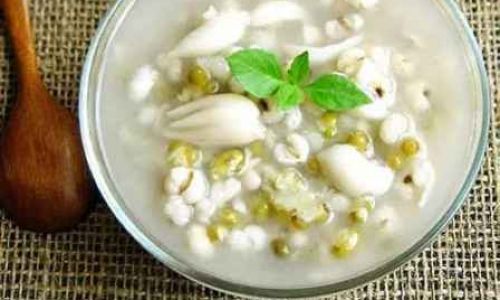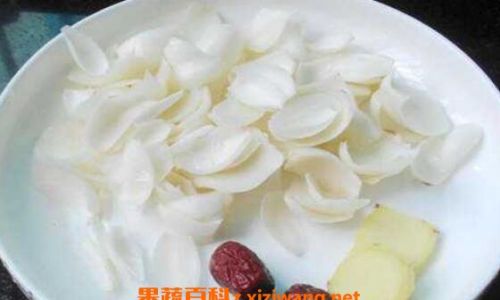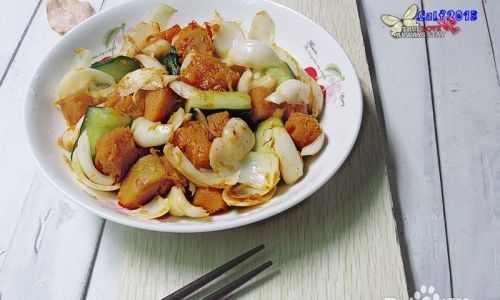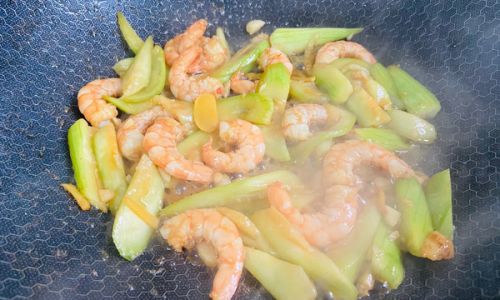Table of content
Lily bulbs, often overlooked in Western cuisine, are a culinary treasure celebrated for their delicate flavor and impressive nutritional profile. Revered in traditional medicine for centuries, these edible flowers offer a unique blend of crisp texture and subtle sweetness that can elevate both savory and sweet dishes. This comprehensive guide explores how to prepare, cook, and enjoy lily bulbs in ways that maximize their health benefits while tantalizing your taste buds. From quick stir-fries to comforting soups, discover the secrets to transforming this humble ingredient into a star ingredient on your plate.

The Nutritional Powerhouse: Why Lily Bulbs Deserve a Place in Your Diet
Before diving into recipes, it’s essential to understand why lily bulbs are worth incorporating into your meals. These underappreciated vegetables are packed with vitamins, minerals, and bioactive compounds that support overall well-being:
- Rich in Antioxidants: Lily bulbs contain flavonoids and polyphenols, which combat oxidative stress and reduce inflammation.
- Dietary Fiber: A 100-gram serving provides nearly 3 grams of fiber, aiding digestion and promoting gut health.
- Vitamins and Minerals: They are a good source of vitamin C, vitamin B6, potassium, and iron, all crucial for immune function, energy metabolism, and electrolyte balance.
- Low in Calories: With only 96 calories per cup, lily bulbs are ideal for weight-conscious diets.
Beyond their nutritional value, lily bulbs are versatile. Their mild, almost artichoke-like flavor pairs well with herbs, spices, and proteins, making them adaptable to various cuisines.
Selecting and Storing Lily Bulbs: Freshness Matters
The journey to a delicious dish begins with choosing the right lily bulbs. Opt for firm, unblemished bulbs with tight, white scales. Avoid those with brown spots or a mushy texture, as these indicate spoilage. If fresh lily bulbs are unavailable, dried or frozen varieties work well—just adjust cooking times accordingly.
Storage Tips:
- Fresh Lily Bulbs: Store in a cool, dark place wrapped in paper towels to absorb excess moisture. Use within a week.
- Dried Lily Bulbs: Keep in an airtight container away from sunlight; they can last up to a year.
- Frozen Lily Bulbs: Thaw in the refrigerator before cooking to retain texture.
Preparation 101: Cleaning and Cutting Lily Bulbs
Proper preparation ensures the best flavor and texture. Follow these steps:
- Peeling: Remove the outer scales, which can be tough or discolored. Use a paring knife to gently peel away layers until you reach the tender, ivory-white center.
- Trimming: Cut off the roots and any remaining stem ends.
- Slicing: For most recipes, slice the bulb into thin strips or bite-sized pieces. Soak sliced lily bulbs in cold water for 10 minutes to remove bitterness and crisp them up.
Pro Tip: Wear gloves if you have sensitive skin, as lily bulbs can cause mild irritation.
Cooking Methods That Preserve Nutrients and Flavor
The way you cook lily bulbs impacts their nutritional value and texture. Here’s how to master four techniques:
Stir-Frying: Quick and Crisp
Stir-frying locks in nutrients while developing a satisfying crunch. Use high heat and minimal oil to avoid sogginess.
How-to:
- Heat a wok or skillet over medium-high heat.
- Add a teaspoon of sesame or avocado oil.
- Toss in lily bulb slices with garlic, ginger, or shallots.
- Stir-fry for 2–3 minutes until tender-crisp.
Nutrient Retention: This method preserves 90% of vitamin C, making it a nutritional powerhouse.
Steaming: Gentle and Healthful
Steaming maintains the bulb’s natural sweetness and texture. Perfect for delicate dishes.
How-to:
- Place sliced lily bulbs in a steamer basket over boiling water.
- Cover and steam for 5–7 minutes until translucent.
- Toss with a drizzle of olive oil, lemon zest, and fresh herbs.
Nutrient Retention: Steaming retains water-soluble vitamins like B6 and folate.

Boiling in Soups: Comforting and Nourishing
Boiling lily bulbs in broths or soups infuses them with flavor while softening their texture.
How-to:
- Add sliced bulbs to simmering soup 10 minutes before serving.
- Pair with chicken, mushrooms, or tofu for a hearty meal.
Nutrient Retention: Some vitamins leach into the broth, so sip every last drop!
Raw in Salads: Refreshing and Crunchy
Thinly sliced lily bulbs add a crisp, slightly sweet element to salads.
How-to:
- Marinate raw slices in lemon juice and a pinch of salt for 15 minutes.
- Toss with greens, cucumber, and a light vinaigrette.
Nutrient Retention: Raw preparation keeps enzymes intact for maximum health benefits.
5 Delicious and Nutritious Lily Bulb Recipes
Stir-Fried Lily Bulbs with Vegetables and Tofu
A vegan-friendly dish bursting with color and texture.
Ingredients:
- 2 cups sliced lily bulbs
- 1 cup cubed firm tofu
- 1 red bell pepper, thinly sliced
- 1 carrot, julienned
- 2 garlic cloves, minced
- 1 tbsp low-sodium soy sauce
- 1 tsp sesame oil
- Black pepper to taste
Instructions:
- Heat sesame oil in a wok. Add garlic and stir-fry until fragrant.
- Toss in tofu and cook until golden (3–4 minutes).
- Add lily bulbs, bell pepper, and carrot. Stir-fry for 3 minutes.
- Drizzle with soy sauce and season with pepper. Serve over brown rice.
Nutritional Highlight: Tofu adds plant-based protein, while the veggies boost fiber and antioxidants.
Lily Bulb and Chicken Soup
A soothing soup perfect for chilly evenings.
Ingredients:
- 1 lb boneless chicken breast, diced
- 4 cups low-sodium chicken broth
- 1 cup sliced lily bulbs
- 1 cup sliced shiitake mushrooms
- 1 tbsp fresh ginger, grated
- 2 green onions, chopped
- Salt and pepper to taste
Instructions:

- Simmer chicken in broth for 15 minutes until tender.
- Add lily bulbs, mushrooms, and ginger. Cook for 10 minutes.
- Season with salt, pepper, and green onions. Serve hot.
Nutritional Highlight: Lean protein and collagen from the broth support joint health.
Refreshing Lily Bulb Salad with Citrus Dressing
A light, zesty salad for warm days.
Ingredients:
- 2 cups raw lily bulb slices, marinated in lemon juice
- 1 orange, segmented
- 1 avocado, diced
- 1/4 cup pomegranate seeds
- 2 tbsp olive oil
- 1 tbsp honey (or agave for vegan)
- Fresh mint leaves for garnish
Instructions:
- Whisk olive oil, honey, and lemon juice for dressing.
- Toss lily bulbs, orange, avocado, and pomegranate seeds.
- Drizzle with dressing and top with mint.
Nutritional Highlight: Vitamin C from oranges enhances iron absorption.
Sweet Lily Bulb Dessert Soup
A traditional Asian-inspired treat.
Ingredients:
- 1 cup dried lily bulbs (rehydrated)
- 4 cups water
- 2 tbsp rock sugar (or coconut sugar)
- 1/4 cup goji berries
- 1/4 cup lotus seeds
Instructions:
- Simmer lily bulbs and lotus seeds in water for 30 minutes.
- Add sugar and goji berries. Cook for 10 more minutes.
- Serve warm or chilled with a sprinkle of sesame seeds.
Nutritional Highlight: Natural sugars provide energy without refined sweeteners.
Pairing Lily Bulbs with Other Nutrient-Rich Ingredients
Enhance lily bulbs’ benefits by combining them with:
- Leafy Greens: Spinach or kale add iron and calcium.
- Cruciferous Vegetables: Broccoli or Brussels sprouts boost sulforaphane, a cancer-fighting compound.
- Healthy Fats: Avocado or nuts improve vitamin absorption.
- Lean Proteins: Fish or chicken create balanced meals.
Common Mistakes to Avoid
- Overcooking: Lily bulbs turn mushy and lose nutrients. Aim for tender-crisp.
- Skipping Soaking: Fresh bulbs benefit from a quick soak to remove bitterness.
- Using Too Much Salt: Their delicate flavor shines with minimal seasoning.
- Ignoring Texture: Pair with crunchy ingredients (e.g., water chestnuts) for contrast.
Conclusion: Embrace Lily Bulbs as a Culinary Staple
Lily bulbs are more than a novelty ingredient—they’re a gateway to healthier, more flavorful meals. Whether stir-fried, steamed, or raw, these bulbs offer a canvas for creativity in the kitchen. By prioritizing freshness, mindful cooking techniques, and complementary flavors, you can unlock their full potential. So next time you spot lily bulbs at the market, grab a bunch and experiment. Your taste buds—and your body—will thank you.
Final Tip: Grow your own lily bulbs! Many varieties thrive in gardens or pots, providing a sustainable, year-round supply of this nutritious gem.





0 comments